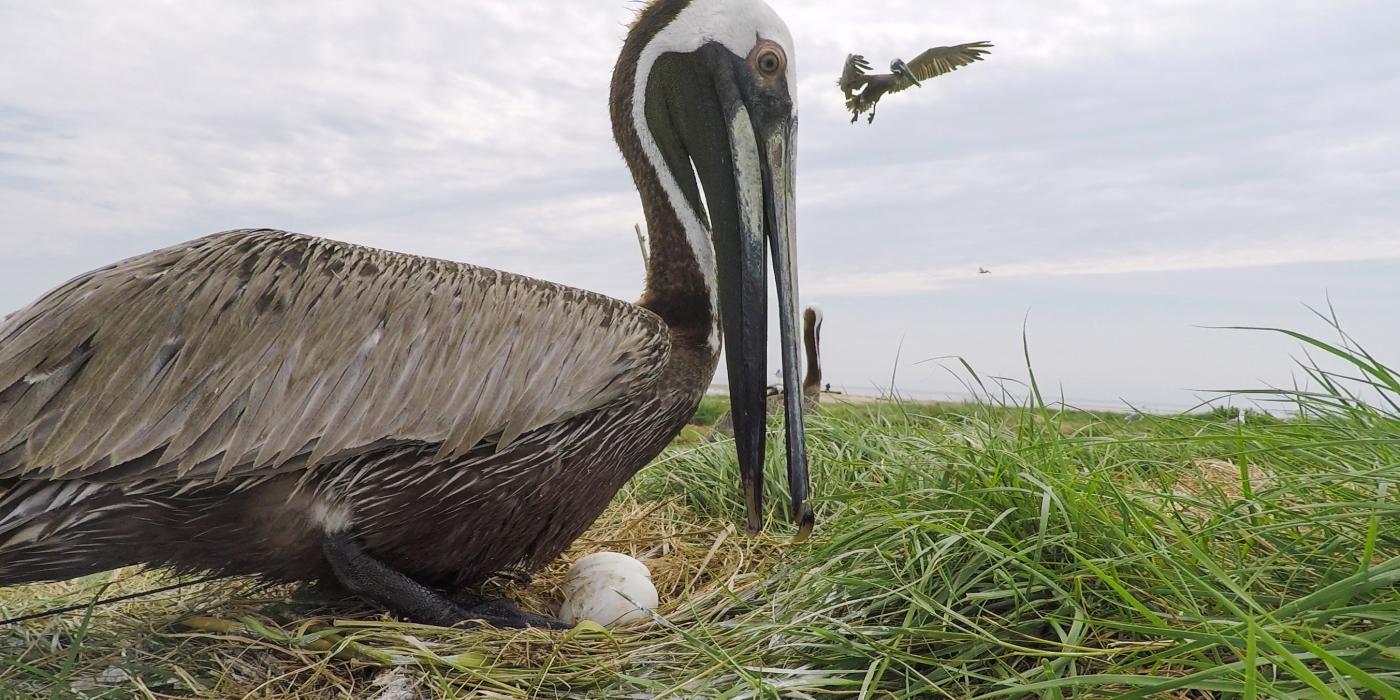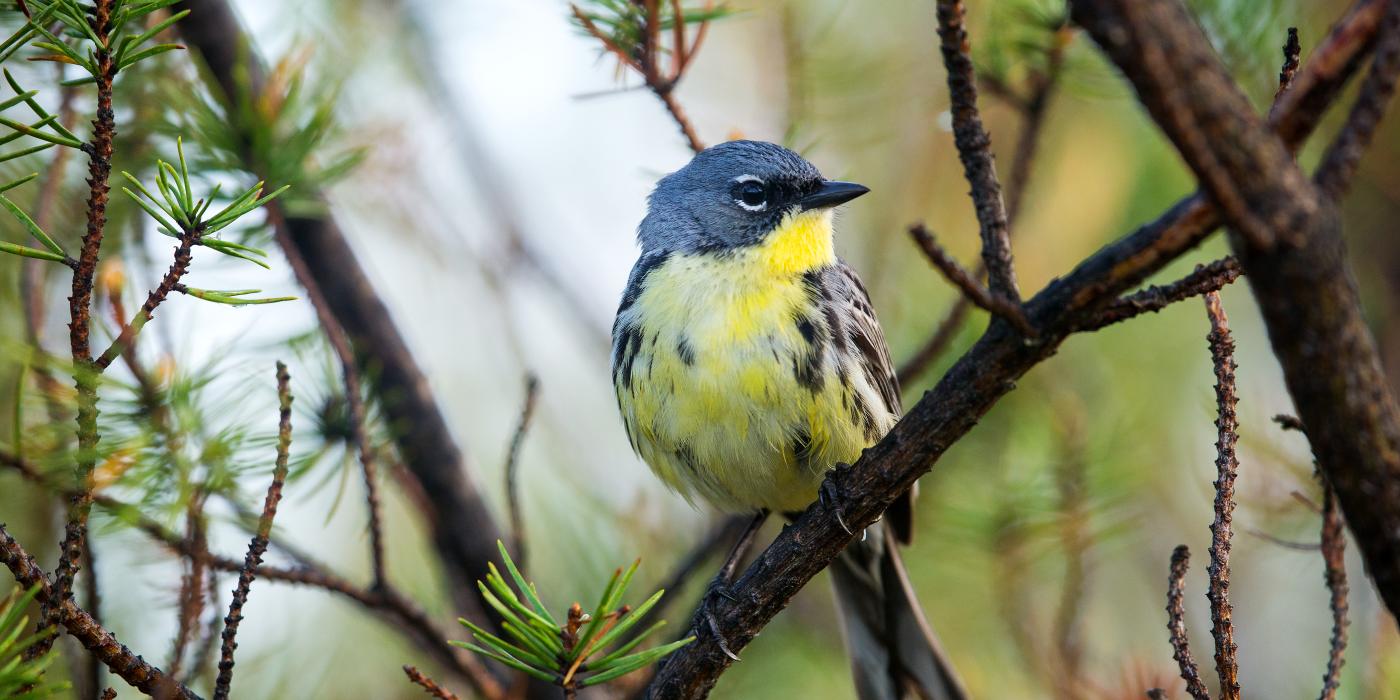Field Notes: Experiencing Brown Pelican Migration
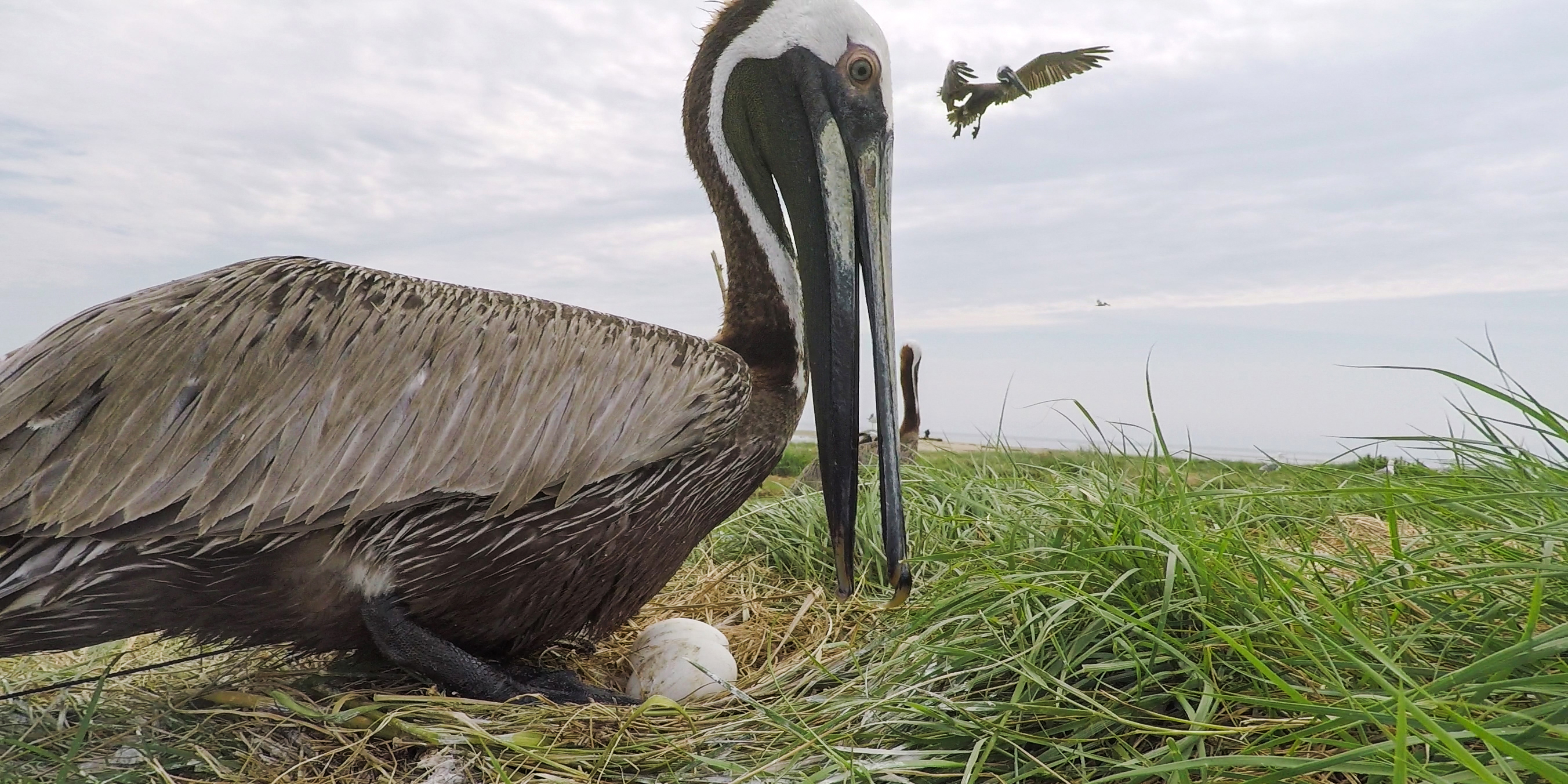
Brown pelicans are one of the Chesapeake Bay’s most magnificent birds. Although they look rather comical, they are exciting and formidable predators while diving for prey. Every summer, thousands of these marine birds journey from southern wintering grounds to breed on the marshy islands of Maryland and Virginia’s Eastern Shore. Two of the nesting hubs—Adam Island and Holland Island—are in Dorchester County, Maryland, where I grew up.
When I was young, it was rare to see a pelican. Populations in the southeastern United States were recovering from near-extinction; this was largely due to the eggshell-thinning effects of the pesticide DDT. The banning of DDT helped pelicans in that area recover and expand northward.
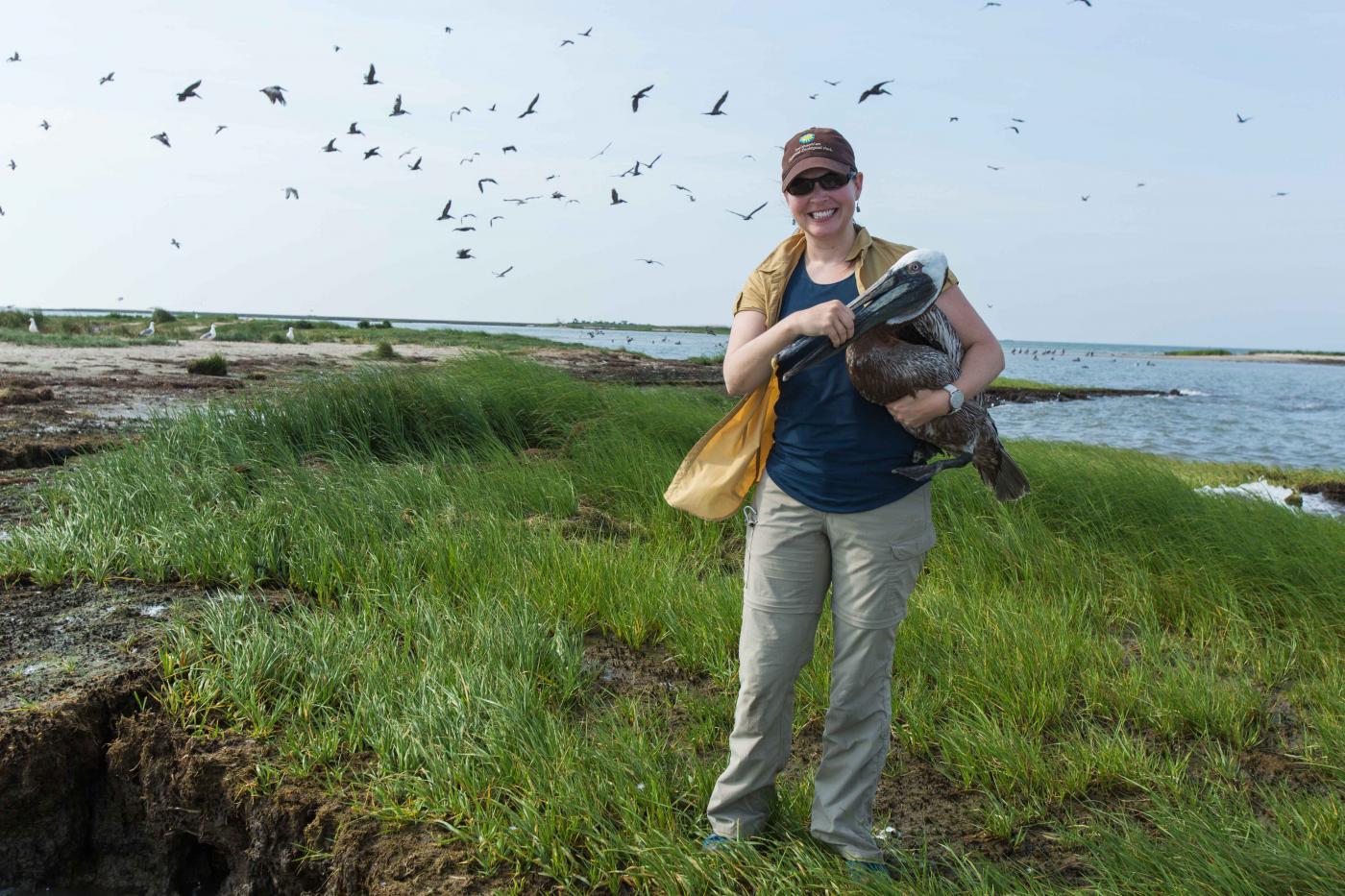
Brown pelicans that nest in the Chesapeake Bay bred here for the first time in 1987, and the species was removed from the Endangered Species list in 2009. It is a true success story!
Last summer, thanks to a Friends of the National Zoo (FONZ) Conservation Nation grant, I returned to study the brown pelican breeding population in the Chesapeake Bay. Seeing so many birds nesting on the islands illustrated just how much progress we have made toward the recovery of this species, and of the Bay.
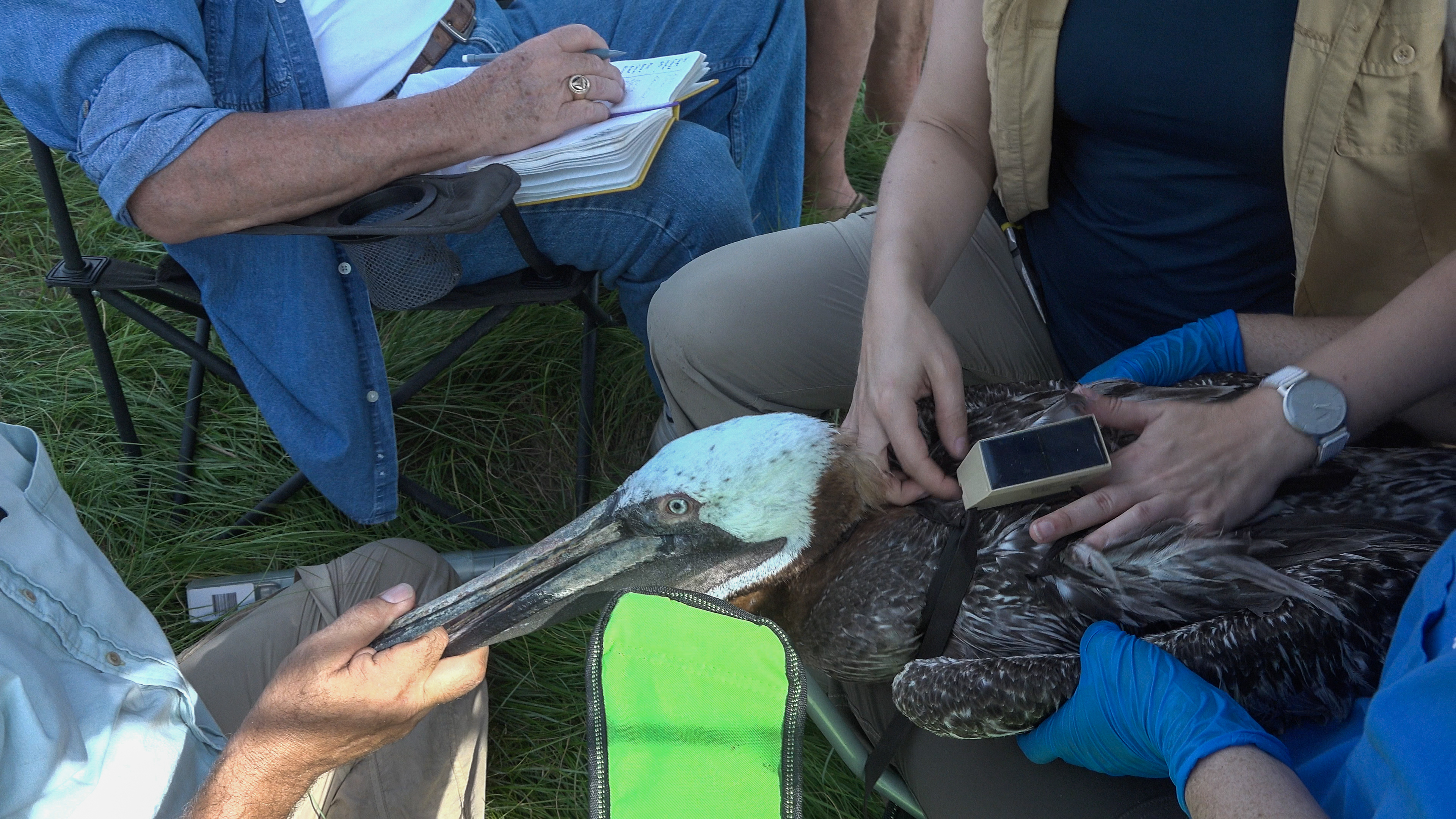
What these migratory birds do once they reach the Chesapeake Bay, where they go and how long they stay is not well known to scientists or managers. Now that the population is fully established in the Chesapeake Bay, I wanted to get a better sense of how their ranges expanded and how these large avian predators use local habitats.
Working with the Maryland Department of Natural Resources, I deployed six GPS tags on the Chesapeake Bay’s brown pelicans to track their movements. Each tag weighs about two percent of a bird’s mass and is designed with a sloped front to reduce drag when they dive. It also has a solar panel to keep the battery charged. I attached the tags using a Teflon ribbon harness, which enables the birds to wear the tags like a backpack.

In the months following the tagging, we have discovered that the birds stayed in the Chesapeake Bay very late into the fall. One bird undertook a migration from the Chesapeake Bay all the way to Cuba, where it is using freshwater lakes in the island’s interior. Within the Chesapeake Bay, the birds are quite enterprising! They use man-made habitats for feeding, including pound nets (pole and net structures used to catch fish). Another two birds were regular visitors to a fish oil tablet processing plant in Virginia. Pelicans also regularly used piers and other structures for perching at the U.S. Naval Air Station Patuxent River and the Calvert Cliffs Nuclear Power Plant on the western shore of the Chesapeake Bay.
While visitors to the Smithsonian’s National Zoo stroll down our American Trail exhibit, I hope they take a moment to watch brown pelicans Pappy, Scout and Huey. Not only are these birds charismatic and quite amusing to watch as they go about their day, but also they are ambassadors for a species that summers right in our backyard, so to speak. Our curators, keepers and scientists have an exciting opportunity to educate visitors about the migration and ecology research we are doing in the field. I hope each animal encounter inspires visitors to learn more about and protect these native birds and their habitats.
This story was featured in the April 2018 issue of Smithsonian Conservation Biology Institute News.

